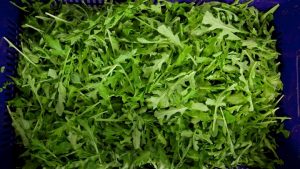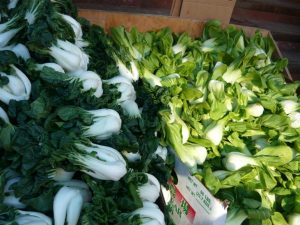4 Easy Ways to Add Leafy Greens to Your Diet
“Eat your greens” was a common phrase at my dinner table growing up. My mother was desperate to get all three of her children to eat vibrant leafy vegetables. Red, orange, yellow, purple, and basically any other colored vegetables and fruits never seemed to spark as much dinner-time contention as the green ones. For years my little sister would even pick parsley out of her mashed potatoes to avoid anything green! I often wondered why my mom was so insistent that I eat the pile of spinach sitting on my plate. Today we are going to explore why greens are central to a healthy diet, where to find a variety of different greens, and how to cook them to make them irresistible.
Leafy green vegetables are an incredibly critical part of a healthy diet. They’re packed with vitamin A, vitamin K, vitamin C, iron, calcium, and fiber. It is important to get these nutrients when you are a child, adult, and senior because they help you build strong bones and keep your digestive system regular. There has also been a lot of evidence that green-heavy diets help protect the brain by sharpening the memory and slowing neurodegenerative decline (NPR). Greens can be the nutritional superstars of a meal and offer numerous health benefits if you eat them every day. Some of these benefits include reduced risk of obesity, heart disease, and high blood pressure (Healthline).
As humans, we are lucky to be able to eat an extremely large variety of different foods. Our food diversity is one of the reasons why people from different cultures and traditions have such unique and interesting recipes. Within the world of food, green vegetables are a massive category. Some popular leafy options include spinach, kale, and collard greens. We can usually find these verdant staples in the frozen, canned, or fresh isle of any local grocery store in the United States. However, if you’re bored of the usual fare, or are just in the mood for something more I encourage you to check out your local Farmer’s Market. In the height of summer, you will find interesting leafy green options that might pique your curiosity and encourage you to try new recipes and eat more leafy greens.
Here are four of the more interesting greens we’ve found at Manna from our local Farmer’s Market:
Arugula is a leafy green with a delicious peppery flavor. The smaller the leaves, the less bitter the taste. Arugula is great in salads, sandwiches, or as a raw topping on a pizza. Arugula is also an extremely hearty crop and can be grown at home by gardeners of all experience levels.
Bok Choy is a slightly bitter but mild vegetable and it is very popular in Asian countries. It’s easy to pair with a lot of strong flavors, which makes it great to add to a variety of recipes. It has thick, dark green leaves with crisp, juicy white stalks, and the entire plant is edible. It is best cooked by adding it to soups, stir-fried, or sauteéd.
Watercress is packed with flavor. It features hot peppery leaves and can add a kick to salads, soups, sauces. Throw watercress into your breakfast eggs, and it pairs beautifully. The hot peppery taste comes from the mustard oil in the plant. Watercress is also one of the oldest known leaf vegetables consumed by humans.
Swiss Chard leaves are tender and have a taste like beet greens and spinach. These greens are vegetal in flavor than kale, and may be more palatable for some. The crunchy stems are slightly sweet and have a similar taste and texture with bok choy stems. Swiss Chard is fantastic sautéed in a pan with some butter, onions, and seasonings of your choice.
A diet with more dark leafy greens is better for your health and can encourage you to be more creative with your recipes. Whenever you can, make it a goal to eat greens at breakfast, lunch, and dinner. Greens are extremely versatile so this shouldn’t be too hard. If you’re not a fan of salads, that’s ok. Try dark leafy greens in soups, pasta dishes, rice dishes, curries, and stews. If you’re someone or know someone who doesn’t like greens try looking for more variety. Consider preparing your greens in a different way or researching different kinds of dark leafy greens at your local farmer’s market. They may even let you try the greens raw right at the farmer’s stand! Many local farmer’s markets provide a great place to support local businesses and will even match EBT/SNAP dollars. Here is a great resource to discover more dark leafy greens: https://cuesa.org/article/farmers-market-guide-greens. Good luck with your green exploration!
4 Easily Ways to Add Greens into Your Daily Diet:
- Add something leafy and green (like kale or spinach) to a premade item like canned soups, delivery pizza, or even a frozen meal. The added greens will help increase the nutrient density of an otherwise lacking meal.
- Make breakfast green! Greens taste great inside of an omelet or mixed into your scrambled eggs in the morning. Add greens to your morning toast and top it sparingly with your favorite dressing.
- Make a green smoothie: add a large handful of spinach to a smoothie. You’ll notice the color and added nutrition, but not the flavor.
- Have a green snack. Heat up your oven and make some kale chips with your greens, oil, and salt. You’ll love how crispy and delicious greens can be.


